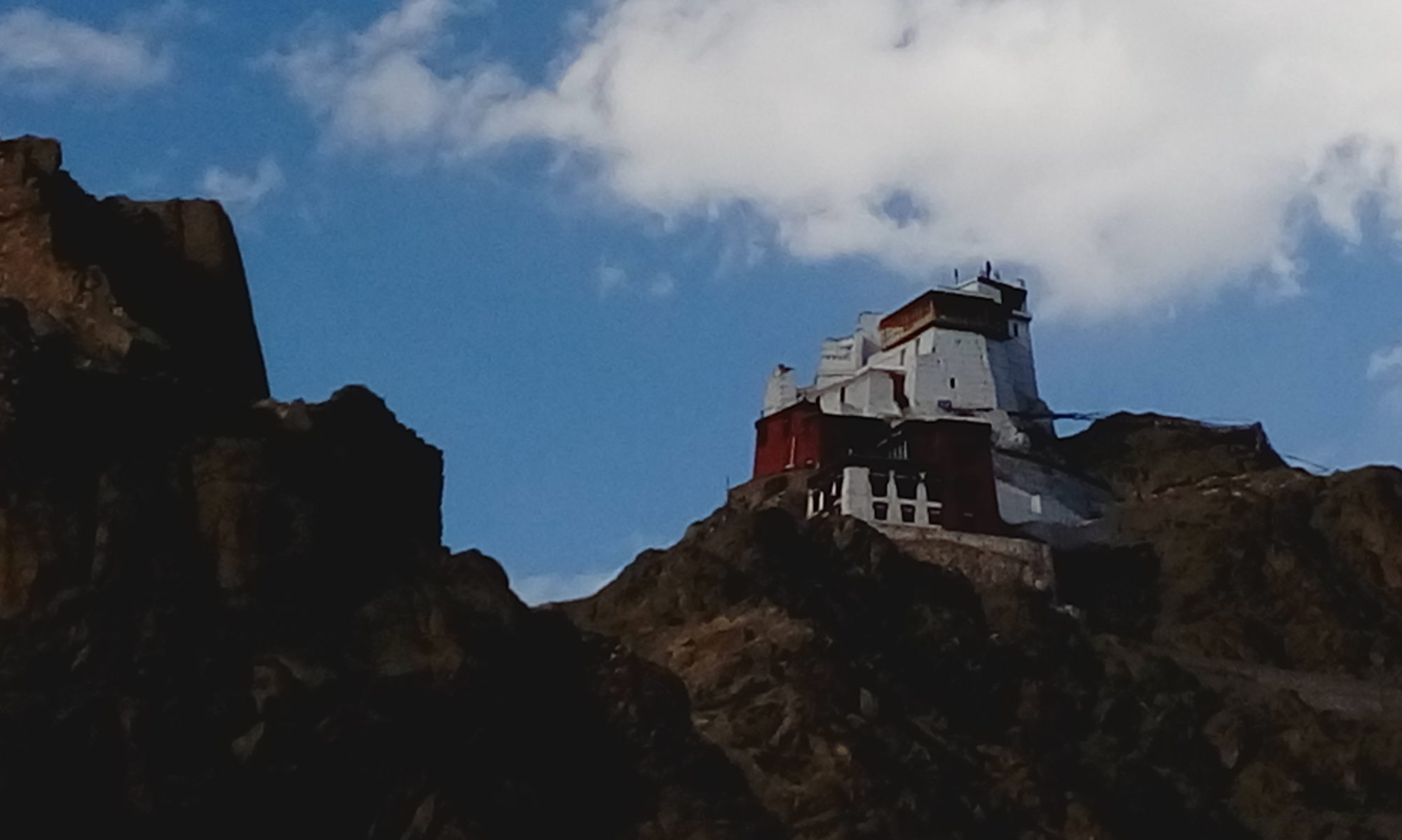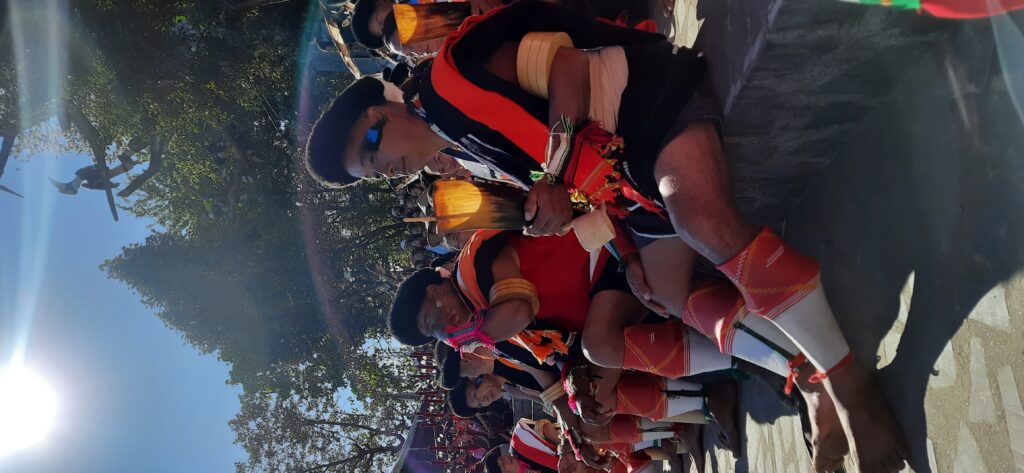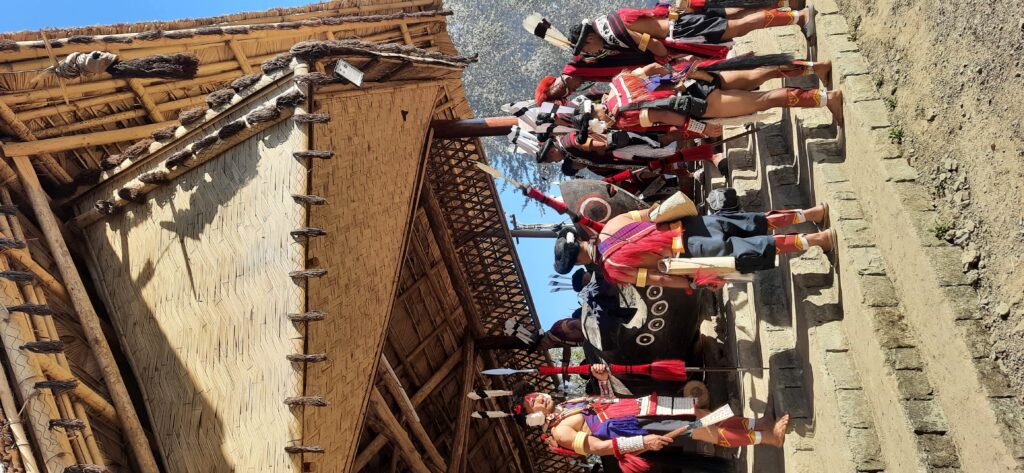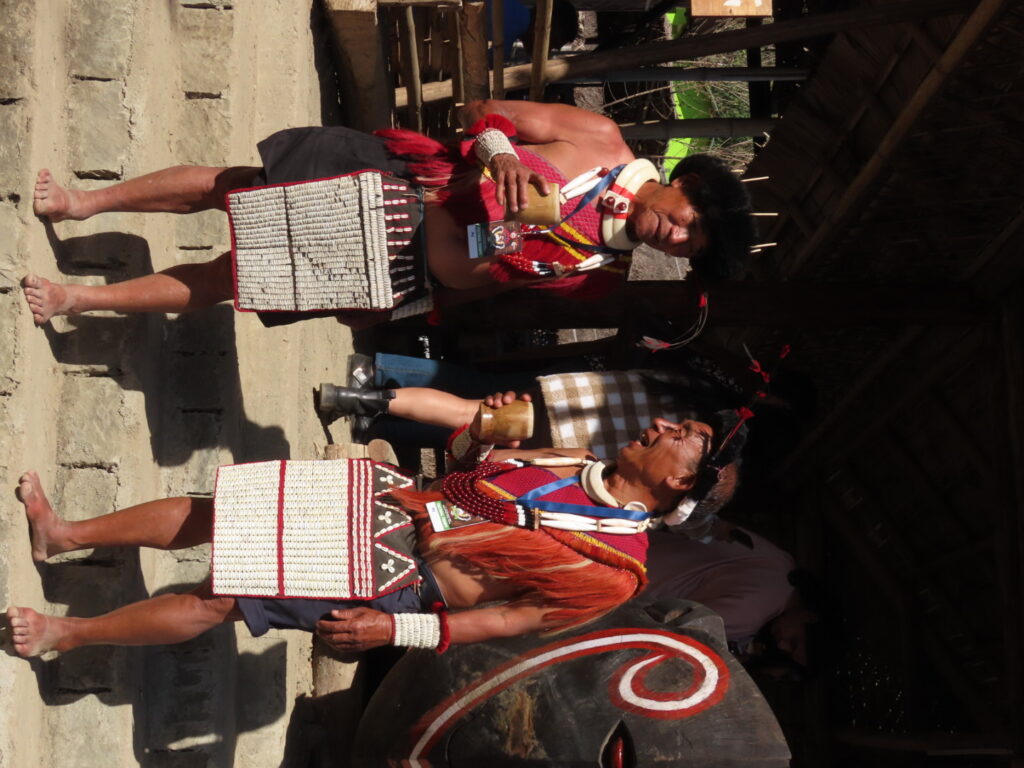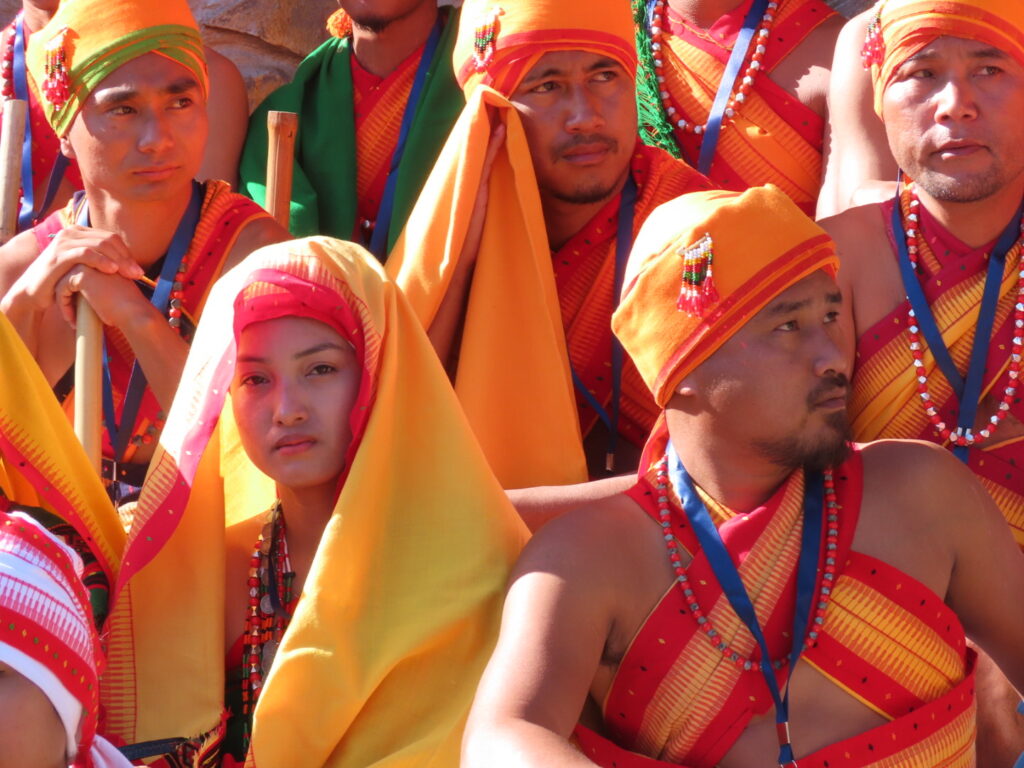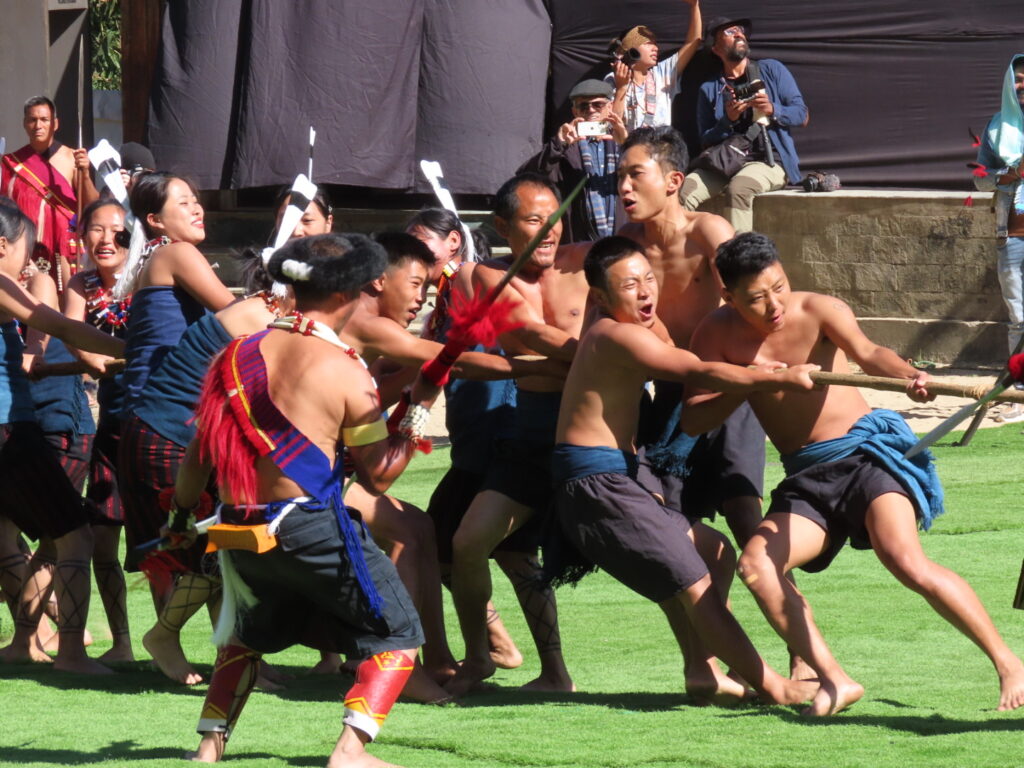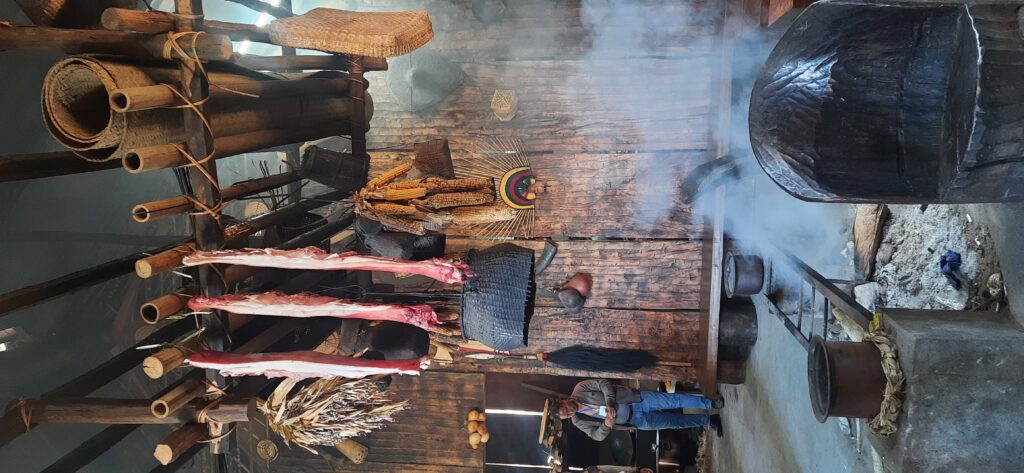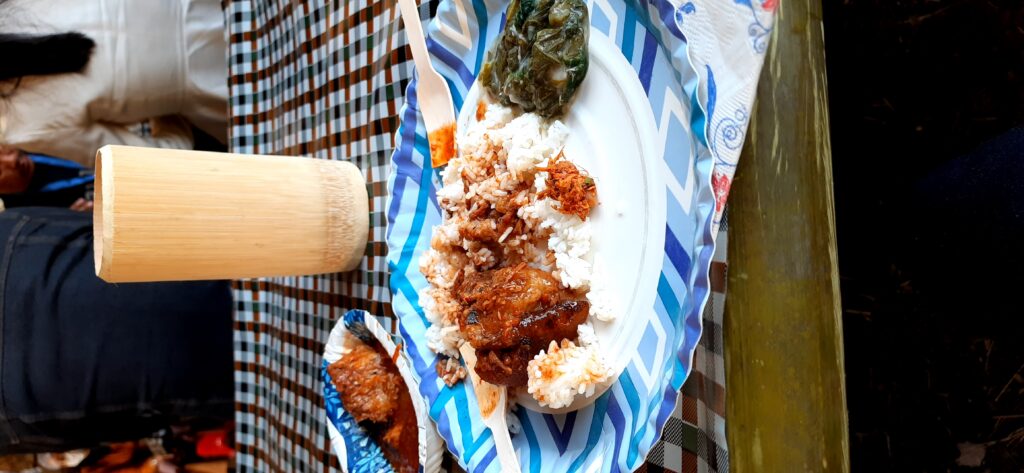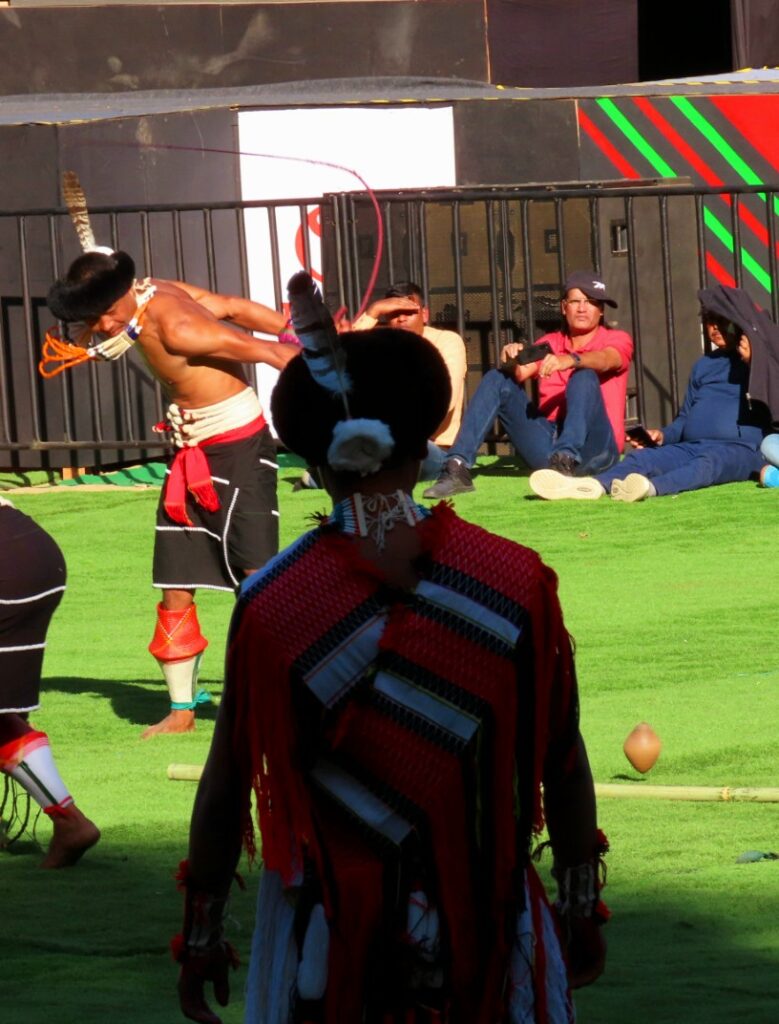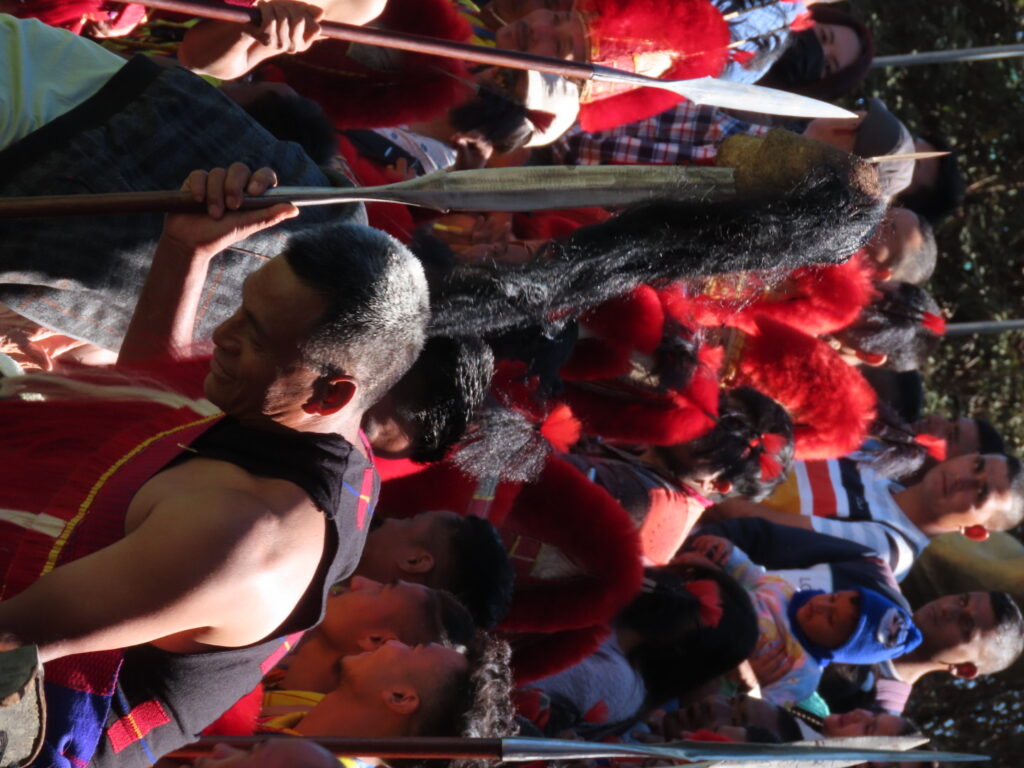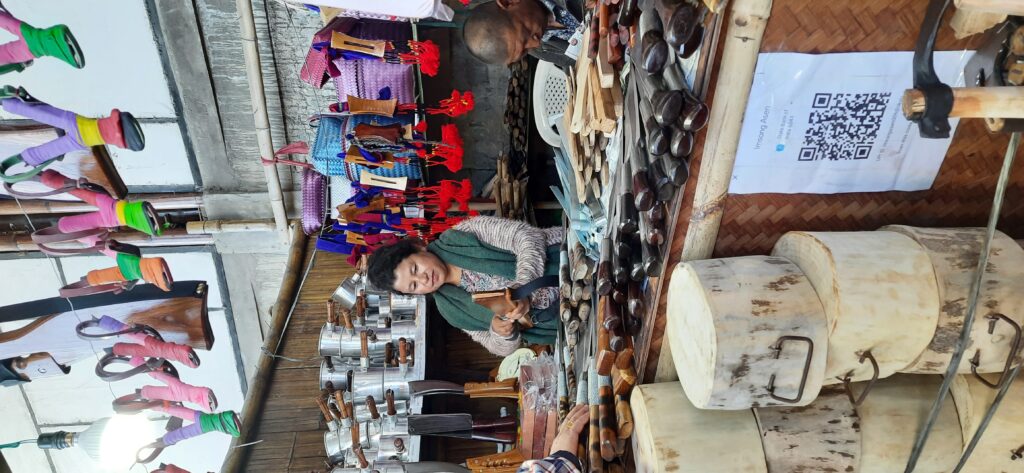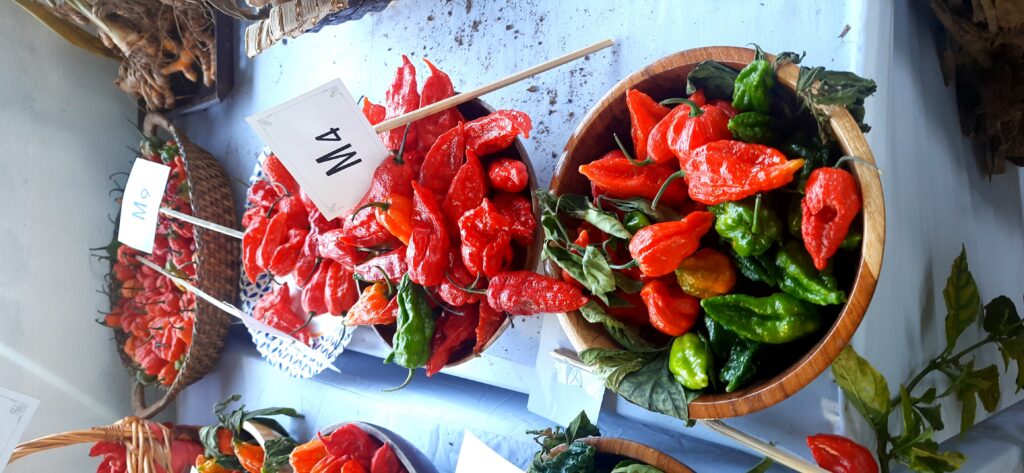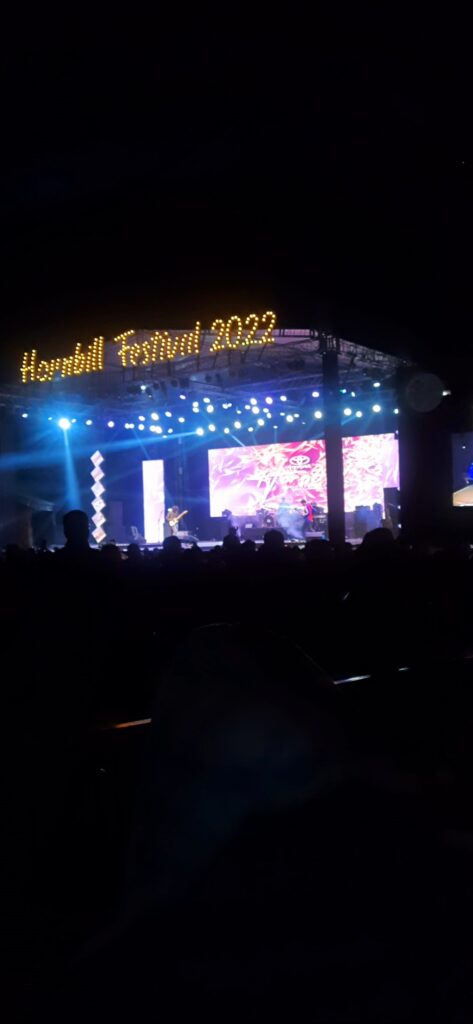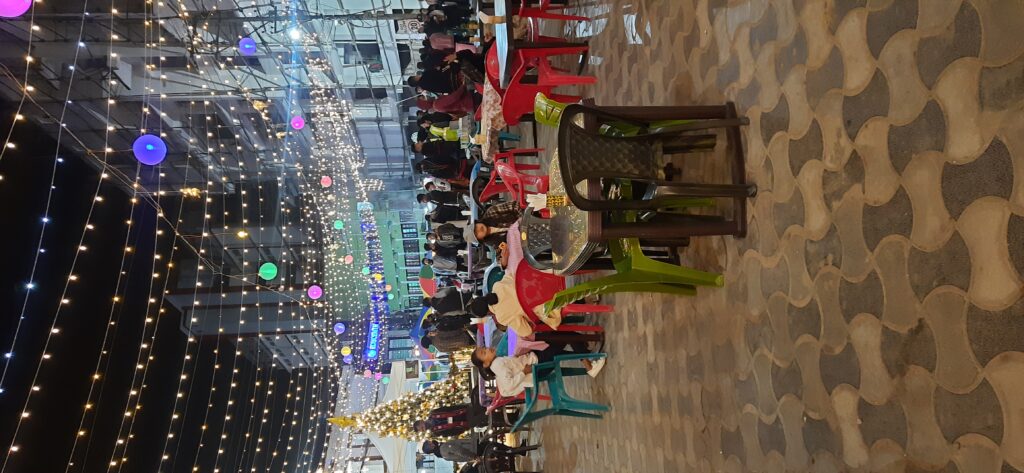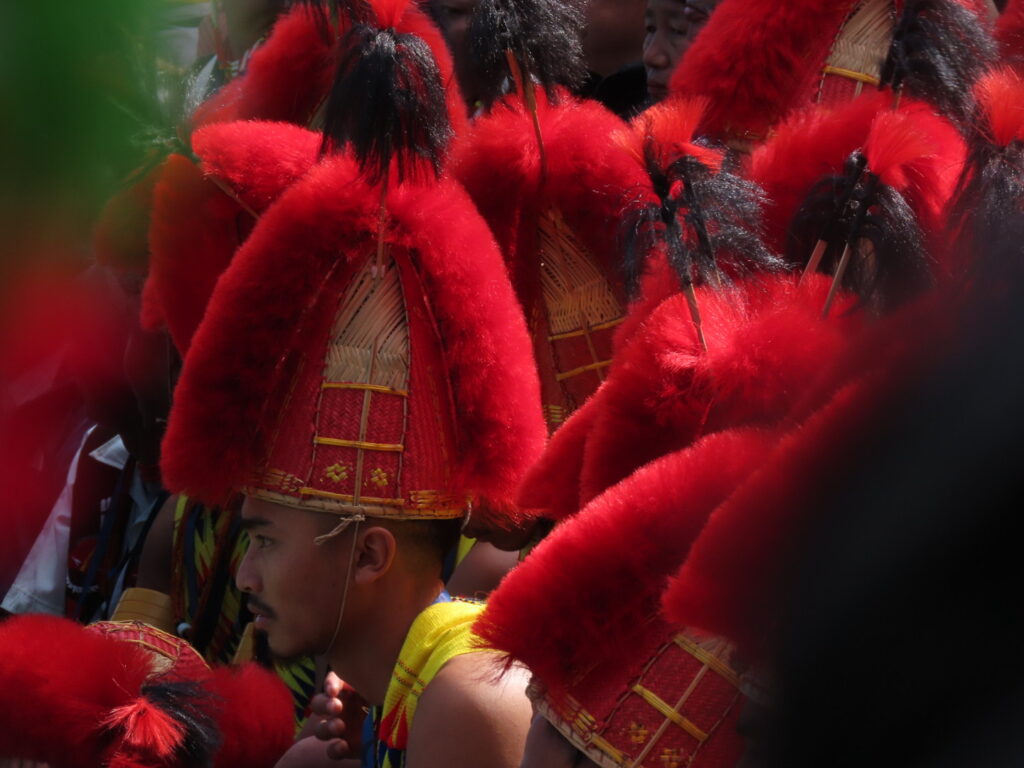The mountains ranges below are like endless green waves pushed into crests and then just as suddenly they give way to a vast valley with a lake on one end. Welcome to Manipur! With just three days to spare for this trip our destination is essentially the Loktak lake of the phumdi fame. But first the shopping bug has to be dealt with and not anywhere but at the iconic Ima market! As we drive towards town the traffic is sparse and the shutters mostly down. We reach the market but the priestess at the market’s temple (also shuttered…Gods are also only that available on an off day) informs that the one day in the month that the shops shut i.e, on Ekadasi is today. She smiles and beckons me closer to put tikka. I say a prayer and take it as a propitious sign, closed market notwithstanding. The language is different as are the Gods, old rulers of the realm- Sanamahi, are the presiding deities in the temple here. We make haste for Moirang and Loktak…driving past step-fields lying fallow at the foot of the hills ringing the valley.
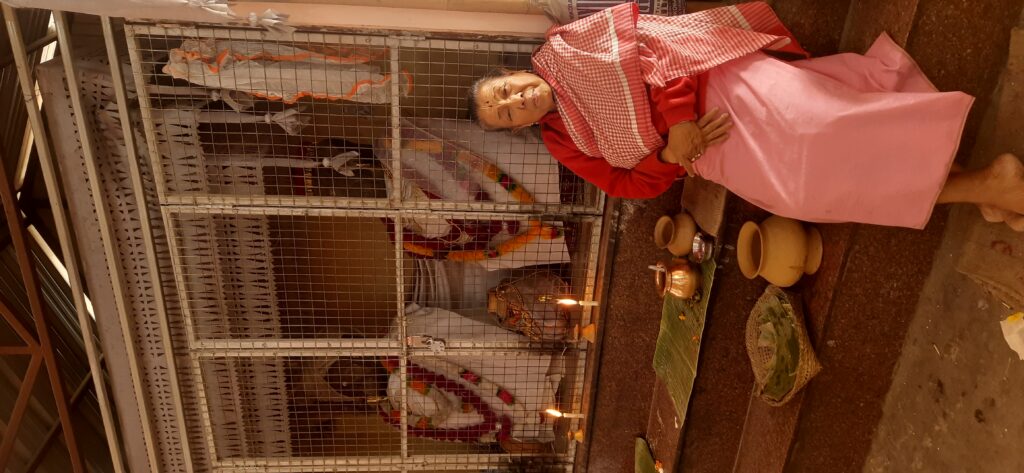
Loktak is more than a Lake
We have just an hour of daylight left and the new jetty at Sendra, all spruced up thanks to G20, with it’s hastily planted carpet lawn, instant flowers, colourful flags and giant dredgers lined up, closes at 5. We head into the lake like eager beavers and make straight for a phumdi. The floating biomass looks solid enough and we get down from the wooden jetty where we have docked. It bobs a bit but holds. A few pictures and it is time to head back.
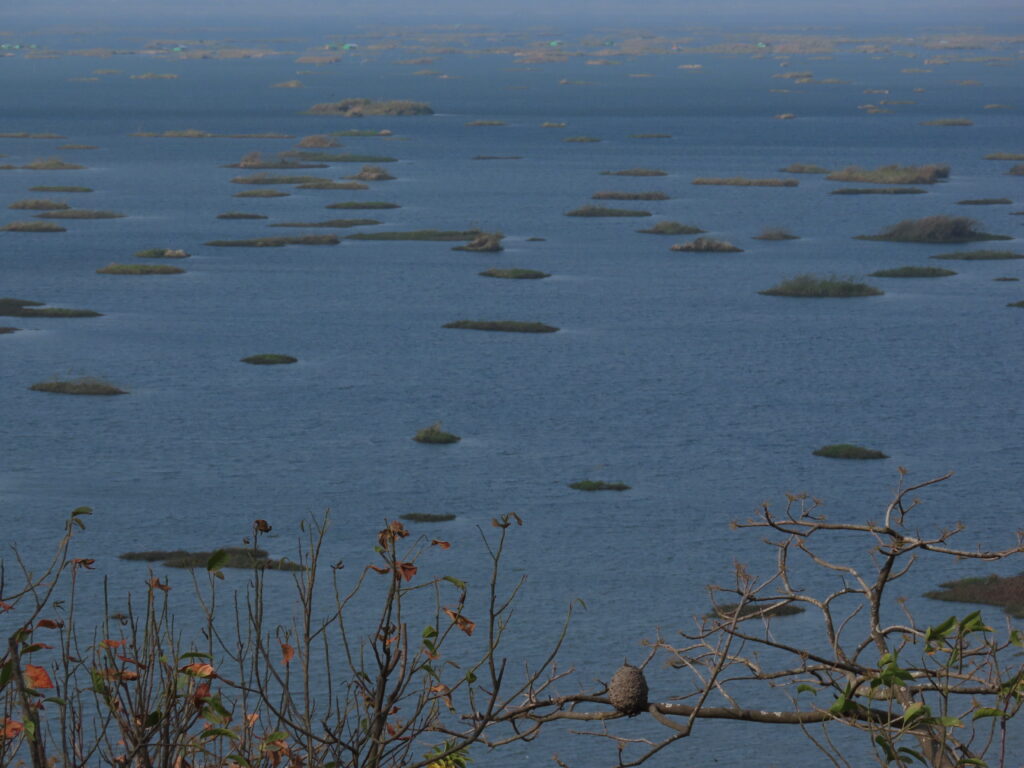
We cross lone figures on their lean long boats heading home in the falling dusk. In the night solitary lights twinkle in the dark waters. Loktak gets its name from ‘Lok’ meaning stream and ‘Tak’ meaning the end. It is Asia’s second largest fresh water lake but it’s the floating phumdis– floating greenbergs of soil and grass, a few solid enough to be inhabited, with their own cyclic regeneration which is now threatened, that are the star attraction here. The circular photogenic ones though, are manmade and are essentially like fishing ponds.
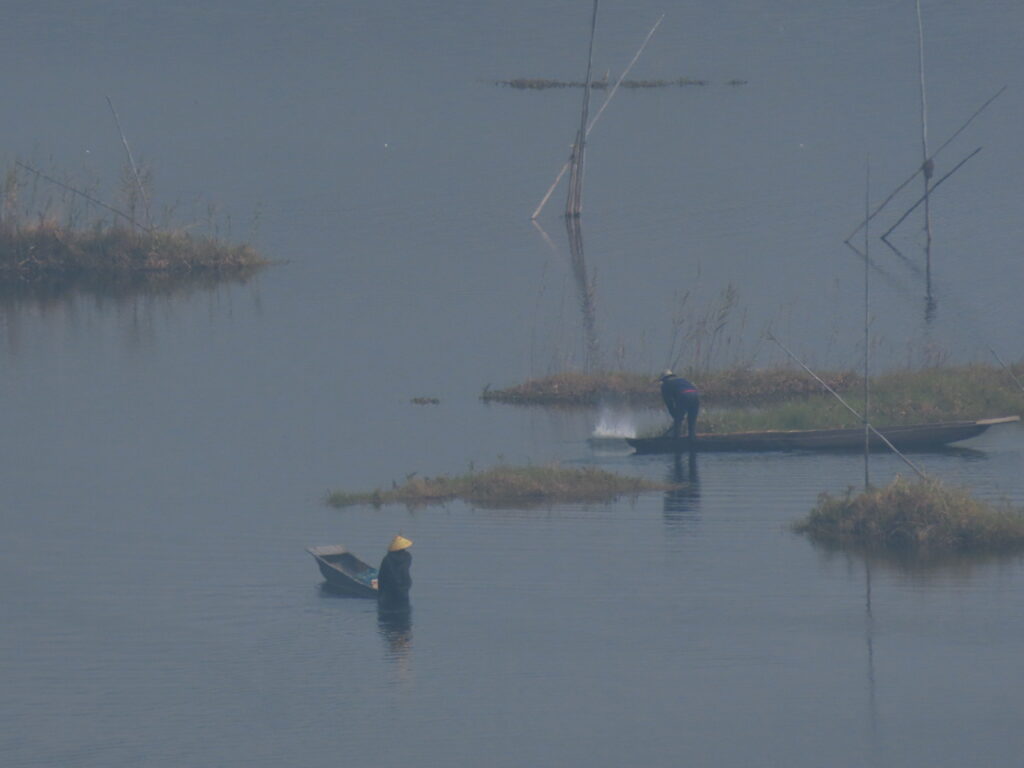
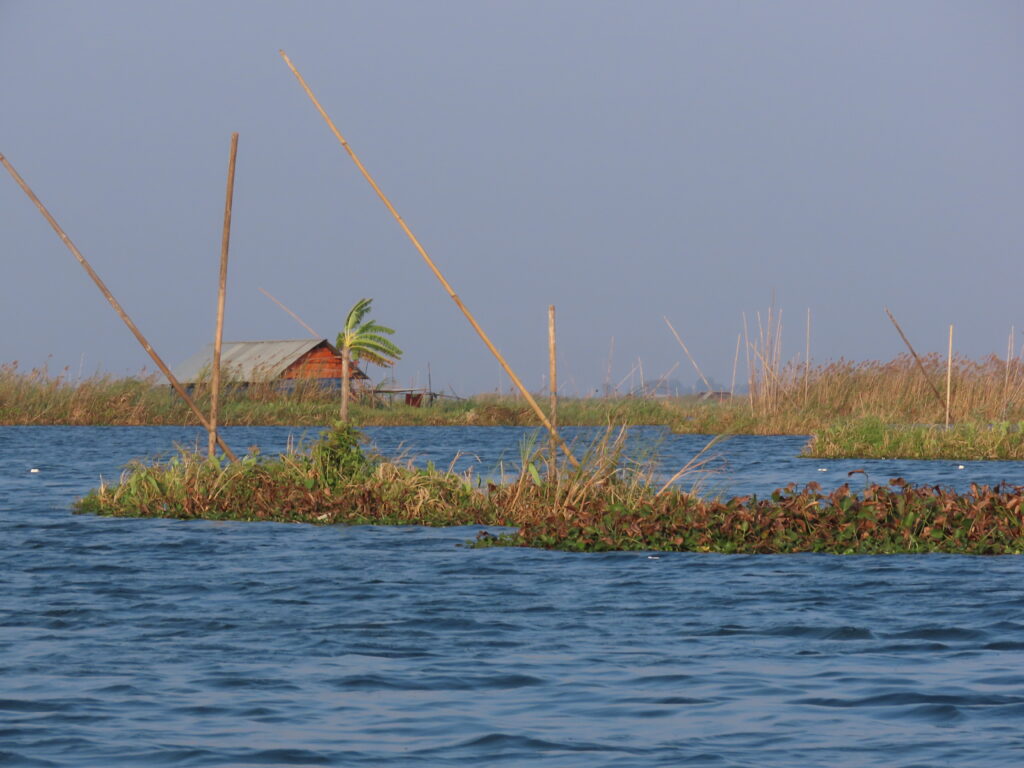
The next day the sky is clearer as is our agenda. After an early morning date with the Sangai, followed by a local cuisine lunch which includes the tasty eromba and divine black sticky rice pudding, we head for a fisherman’s hut on a phumdi for a tea picnic. We are told that the government has recently cracked down on the motley lot of homestays which had sprouted on them. Not to be deterred, it is ‘self-help tea in a thermos’ that we carry along! We skim over reeds barely underwater, past fishing poles strung out on the water and make a whole raft of coots and ducks take flight reluctantly to make way for us.
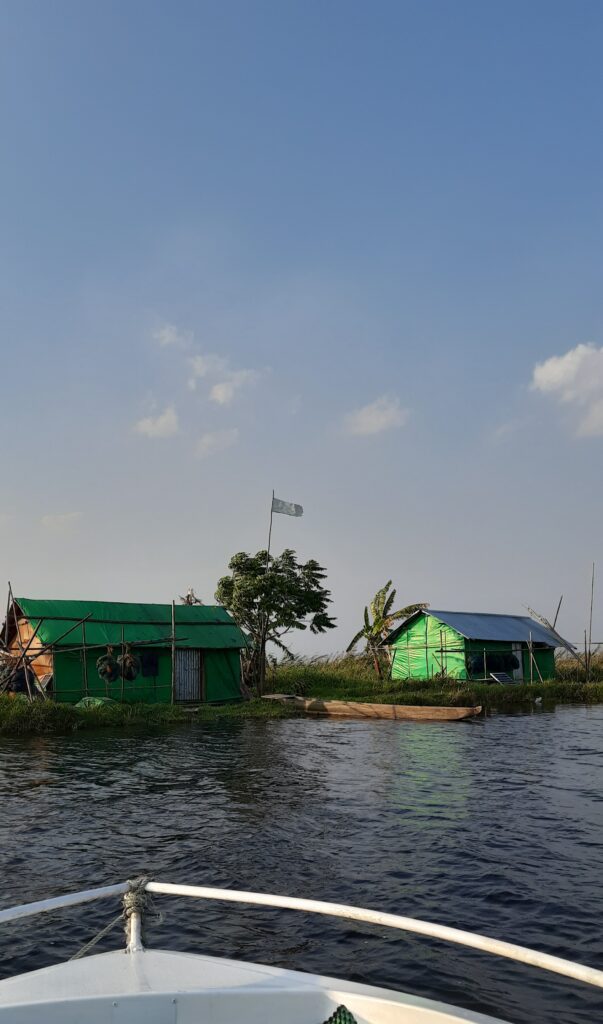
We nose onto a phumdi with a tiny hut, a log boat parked in front, a banana tree growing beside the hut, and balled up nets to catch the fast drowning sun. We walk on the wooden planks to the adjoining one with another hut. There isn’t a soul around other than a mewling hungry cat. The boatman pulls out a few sprigs of some plant and offers me one. The stems have a strong flavour. A lot of the island is edible it seems! Sitting in the log boat we drink in the silence with sights of huts on tiny floating islands around, along with our tea. The hills are silhouetted against an orange sky as we reluctantly leave this oasis of green huts on greener grass.
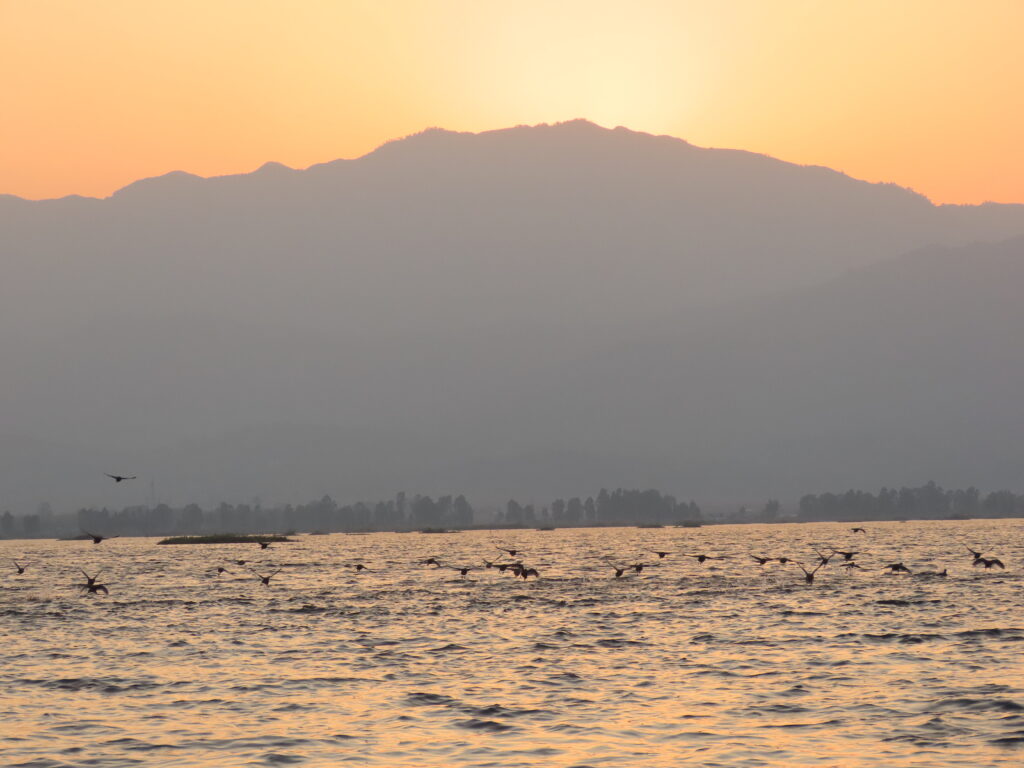
The Dancing Deer of Keibul Lamjao
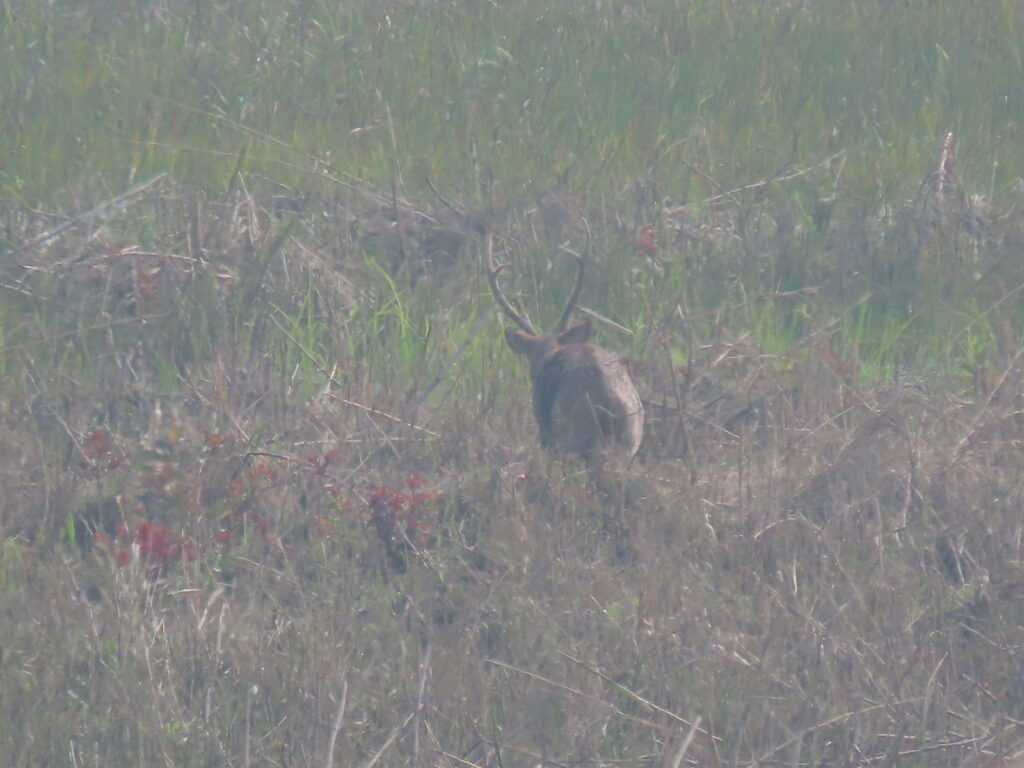
Its an early start for the world’s only floating sanctuary which is home to the endemic and endangered Sangai. The deer is an integral part of the Meitei culture and is considered one of the rarest species in the world, yet it’s home is just a forty square km national park, threatened by a reservoir created to feed the Loktak Hydel Power Project. The stags have four antlers with two seeming to sprout from it’s brow.
We head up to the viewing point and the ground in front is a bowl of drab yellow brown grass covered by a lid of haze. What feels like a long futile wait ends when out of the tall reeds a brown bit steps out. It is a female Sangai. Soon another emerges, this time with a fawn.
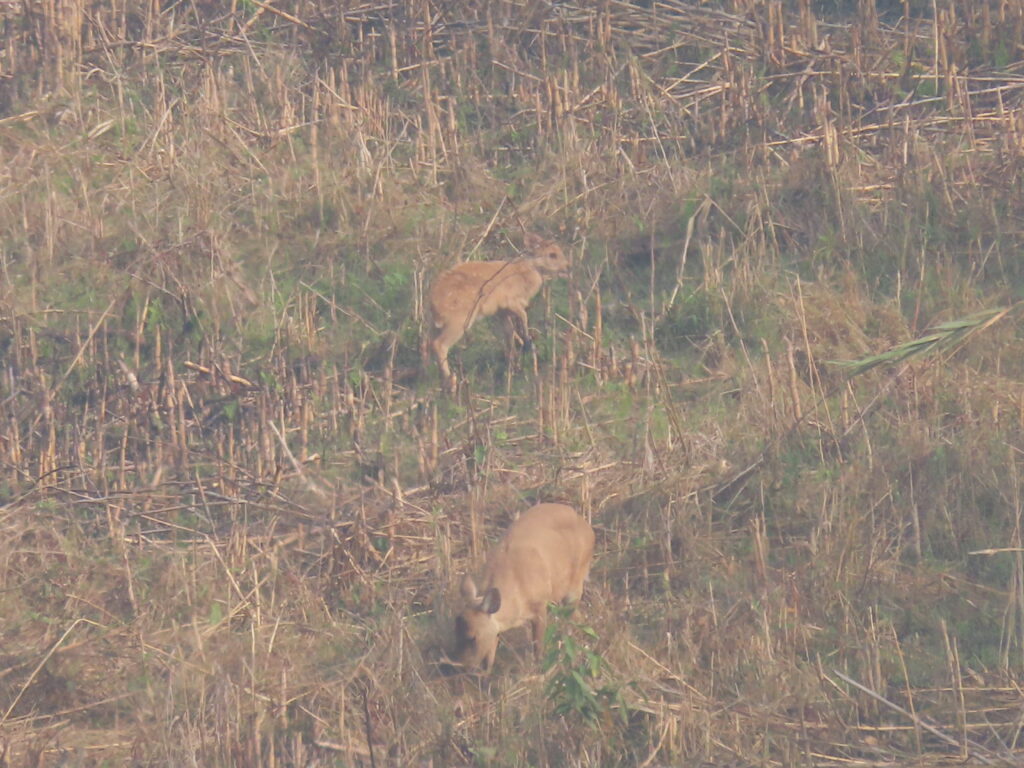
Then in the far distance in the fire line a stag or two appear. Their antlers dipping as they feed. The forest guide is a young, chatty fellow. He is the only one left out of the couple who were trained since there is no pay (how does that even work??!) He offers to take us into a narrow channel below in his canoe. A running commentary on Meitei culture ensues while he steers us towards a clearing. This is where he got Rocky (of Highway on My Plate fame) we are told. The phumdi’s black soil is still churned up as we gingerly get down. As the soft carpet of soil and grass sinks under us and undulates with each step, I tell myself it has taken on weightier things. No wonder the deer look like they are dancing! The boat feels so stable and solid in comparison.
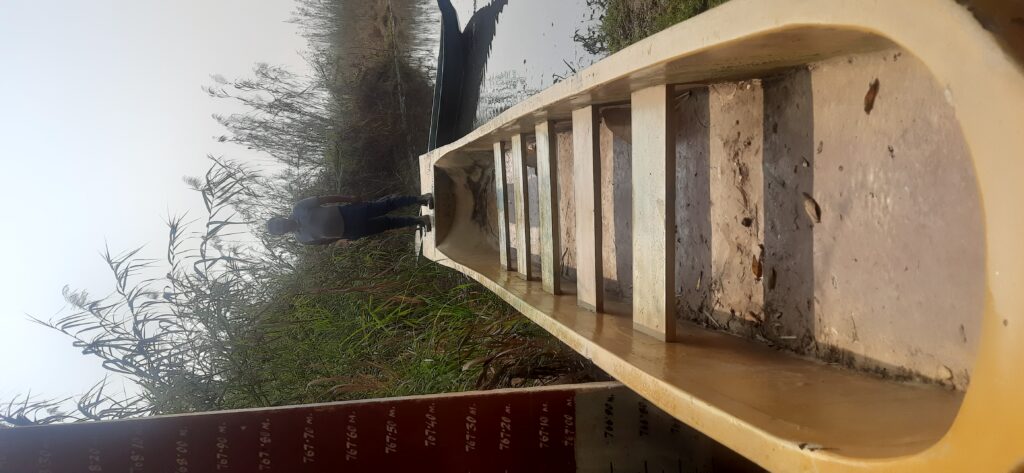
As we reach back another fellow in a smaller boat is stripping bits of the tall reed. Food here is sourced from things that grow naturally. Imagine not cultivating and yet never running out of food!
Moirang’s Moment of Glory–
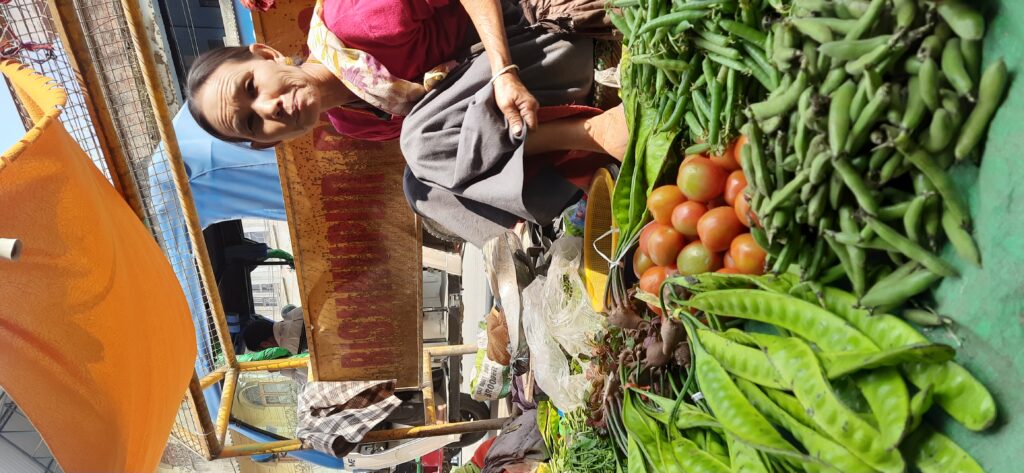
Moirang near Loktak is a small town with a big place in Indian history. The Moirang king was the most powerful of the various clans in Manipur and it was here that the tricolour was first hoisted by the Indian National Army on India’s mainland in 1944. There is a small museum dedicated to it. The vibrant innaphi (stole)and phanek (wraparound skirt) worn by the women in the quaint market are too much of a temptation and I end up buying a phanek which is stitched up in a jiffy behind the shop and the owner indulgently shows me how to wear it. The fresh market has women selling giant cabbages and string beans amongst other greens and buckets of snails. A woman churns what smells like fermenting fish in a giant earthen pot.
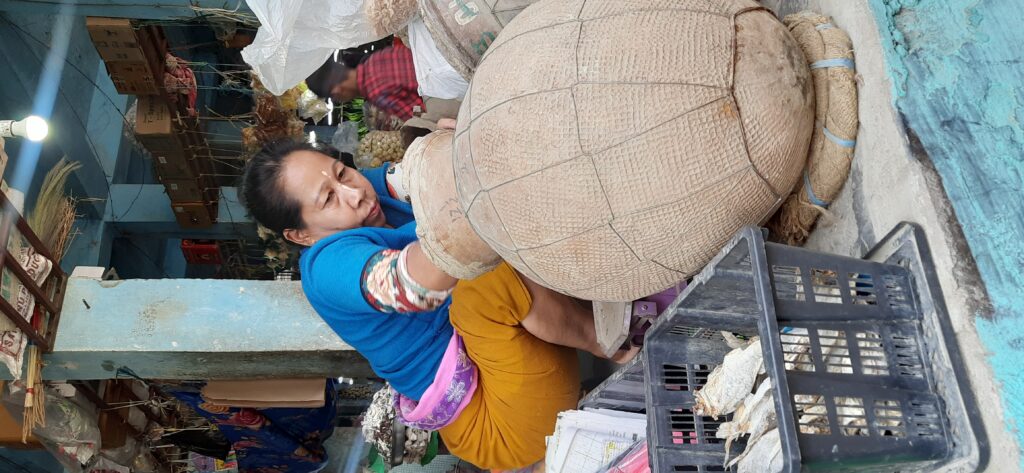
Imphal’s Iconic Ima Market
One cannot leave Imphal without a visit to the iconic Ima Keithal or Mother’s Market. The nearby Kangla Fort will have to wait for another trip. The nearly 500-year-old market run and managed exclusively by married women is housed in three adjoining buildings. The buildings are an airy, spacious and clean affair with open stalls on elevated platforms. The extra stuff gets stored into giant trunks below as we see in the other two portions where brightly coloured local textiles vie for attention.
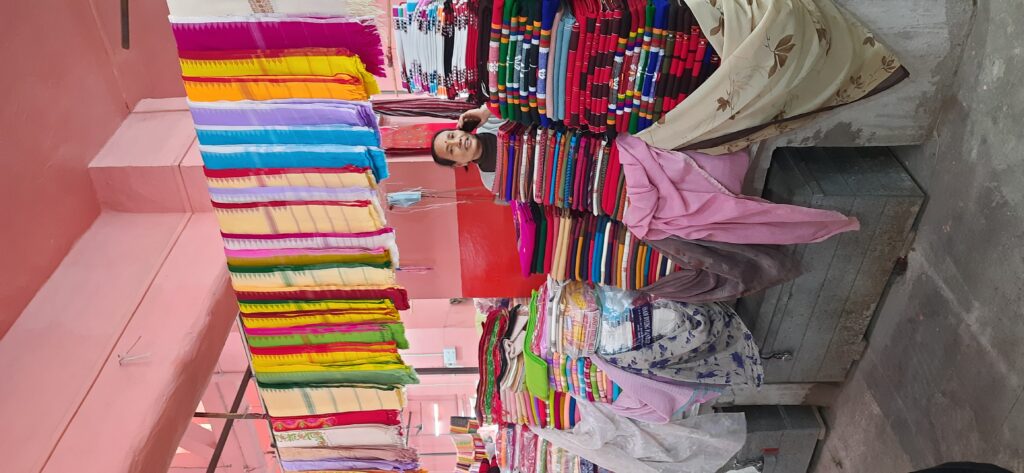
The fresh produce section is bustling early in the morning and today the temple at the entrance with its circular paper prayer flags is open. Women stop to pay obeisance and get the traditional long sandalpaste tikka put.
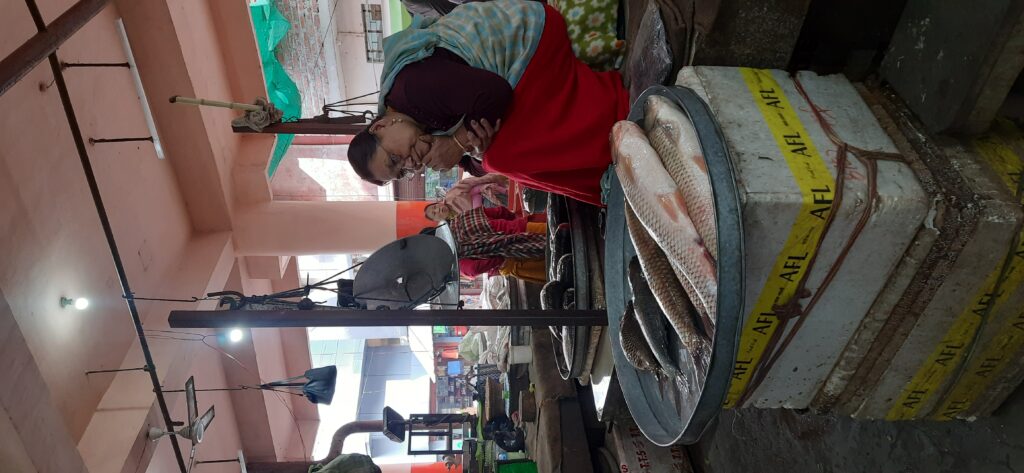
The wares here range from handicrafts, everyday essentials, groceries, local food items to fresh produce and everything else in between. A woman admonishes me like a child for smelling some fresh vegetable, another encourages me to check out the varieties of mushrooms piled up (so tempting!) and one sitting with mounds of varieties of rice being feasted on by bees laughingly chides me for wanting only her picture and not her wares!
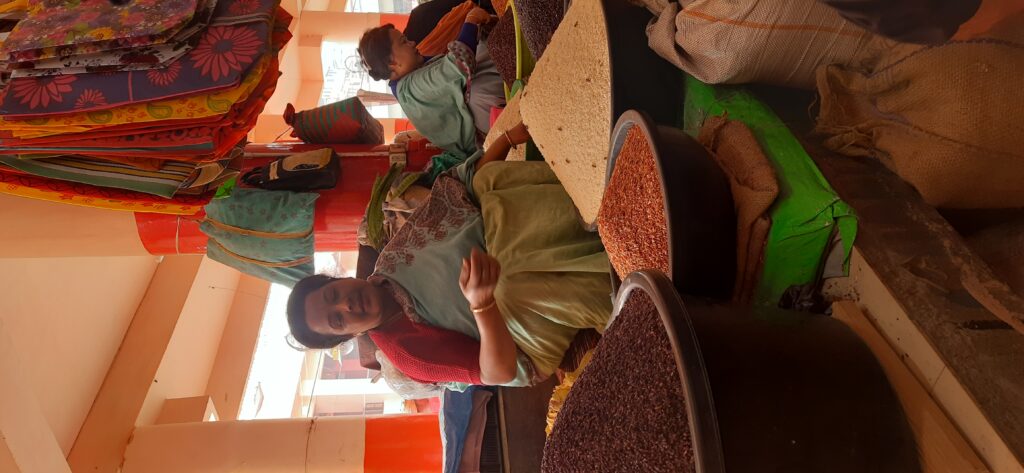
The fish in the trays still have pink gills and in a corner we discover food stalls dishing out fresh local cuisine. Its too tempting to pass on so I clamber onto the platform where the proprietress sits in between the low table and bench and doles out copious quantities of rice and portions of fried fish, vegetables and chutneys in bowls. Fermented fish is the staple ingredient in a lot of local dishes and the eromba here is flavoured with it. I am given a mug to wash my hands into and a towel to wipe them. Only a mother would think it through.
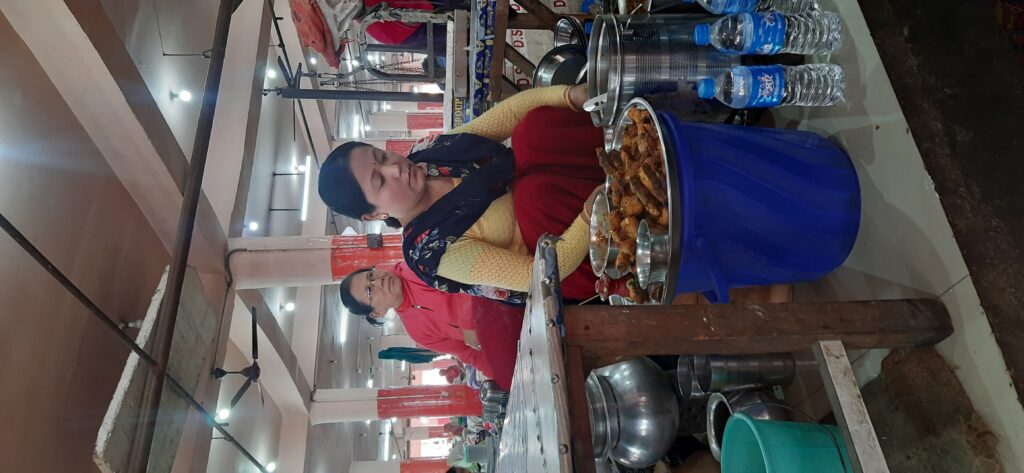
Fact File-
Getting there-
Air- Imphal has an International airport and has regular flights from Delhi, Kolkata and Guwahati.
Rail– The nearest railhead is 200kms away at Dimapur. From there buses and taxis are easily available.
Loktak is approx. 40 kms from Imphal.
Keibul Lamjao National Park is a 20 minute drive from Moirang.
Staying–
At Moirang and Sendra there are a few basic homestays and hotels.
The Sendra Park and Resort offers cottages.
Miscellaneous–
The boat rides start from the new Jetty at Sendra and an hour’s ride cost 2000/-.
The entry fee for Keibul Lamjao is 30/- for Indians and 200/- for foreigners and there are extra charges for cameras.
Language can be a challenge as the locals often do not speak Hindi or English.
Best time to visit is post monsoon November onwards to March.
As always, be a conscious traveller and carry your own water bottle.
